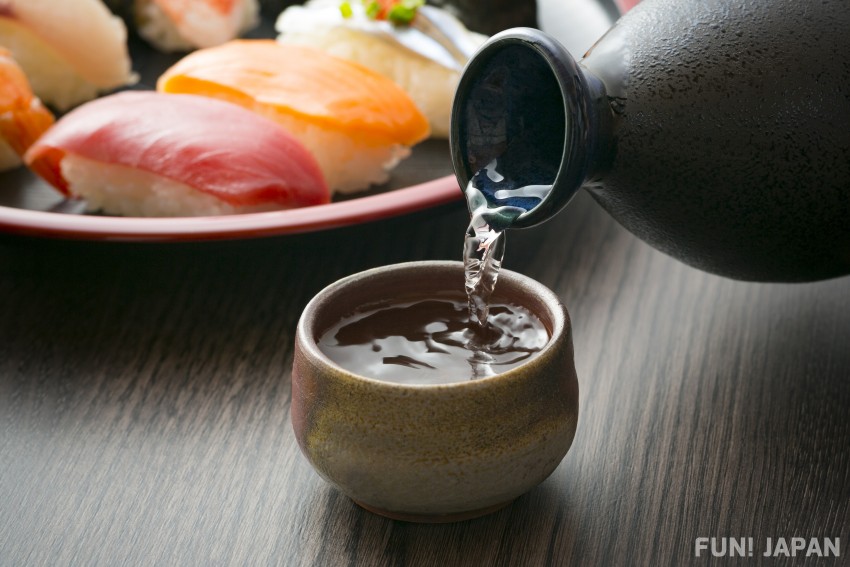
As introduced in "The year-end party season is just around the corner! Essential knowledge about Japanese Izakaya menus and alcohol", in Japan, many drinking parties are held from December to the New Year, a period called the "year-end party season". In this article, we introduce unique Japanese phrases unique to the year-end party season, how to enjoy "SAKE" during your trip to Japan, and the sake culture of the New Year. If you're planning to visit Japan at the end of the year, be sure to check this out!
※Underage drinking is prohibited. Be sure to abide the law of legal drinking in your own country too.
Experience authentic "SAKE" in Japan! From chilled to hot, the name of sake changes with temperature

Nihonshu (日本酒), made by adding water to rice (sake rice) and koji and fermenting it, is now loved worldwide under the name "SAKE". However, in Japan, the taste and aroma change depending on the temperature at which it is drunk, and so does the name.
Here, we introduce the names of sake that change with temperature! When visiting Japan, why not try drinking at various temperatures and find your favorite sake temperature?
How does sake change when chilled or warmed?
When you drink sake chilled, it is called "Reishu". Generally, chilled sake is perceived as crisp and refreshing, and you can enjoy a clear, refreshing sensation. Among the ways to enjoy chilled sake, there is also a fun way called "Mizorezake", where you pour sake that has been chilled to the point of almost freezing. This is when the sake at the brink of freezing turns into a slushy state due to the shock of hitting the glass. You can enjoy the crunchy texture and the process of making it as a performance.
When drinking at room temperature (about 15-25℃), it is called "Hiya", and the charm is that you can enjoy the original aroma and good mouthfeel of sake more than chilled sake.
Also, the recommended way to drink in the winter season is definitely hot sake. By warming it, the taste of the rice, which is the raw material, is enhanced, and you can enjoy the rich aroma, and it goes perfectly with winter delicacies such as crab dishes and hot pots! It is a traditional way for Japanese families to enjoy hot sake while sitting in a kotatsu or picking at New Year's dishes during the New Year.
The names of sake that change with temperature

As introduced above, Japanese sake is broadly divided into three categories: cold sake (冷酒 / Reishu), chilled sake (冷や/ Hiya), and hot sake (熱燗 / Atsukan). For cold sake and hot sake, there are more detailed names every 5 degrees.
The main names are as follows.
- 5℃: Yukibie (雪冷え - snow chill)
- 10℃: Hanabie (花冷え - flower chill)
- 15℃: Suzubie (涼冷え - cool chill)
- 30℃: Hinatakan (日向燗 - sunlight warm)
- 35℃: Hitohadakan (人肌燗 - skin warm)
- 40℃: Nurukan (ぬる燗 - lukewarm)
- 45℃: Joukan (上燗 - upper warm)
- 50℃: Atsukan (熱燗 - hot sake)
Unique Japanese related to alcohol you want to know for the Japanese year-end party season!

During the year-end party season, a lot of unique Japanese phrases are thrown around at drinking parties. From here, we will introduce the meanings of Japanese and Wasei English (Japanese-made English) that Japanese university students and company employees often use at year-end parties!
Alcohol-related terms often used in conversation
Jougo & Geko ('上戸' - Heavy Drinker & '下戸' - Light Drinker)
In Japan, people who drink a lot of alcohol are referred to as "Jougo" and those who don't as "Geko". Jougo refers to people who can handle their alcohol well, while Geko refers to those who get drunk easily. This terminology is said to originate from the household ranking system established by the "Taiho Ritsuryo" code about 1300 years ago, which was based on the number of young men in each household. At that time, households with many young men were called "Jougo" (upper rank household) and those with few were called "Geko" (lower rank household). The amount of alcohol provided during weddings and other ceremonies differed between these households. Hence, today "Jougo" refers to people who can drink alcohol, and "Geko" refers to those who cannot.
- Example of use:
- A-san: "Bくん、1杯目からずっとバナナシェイクしか飲んでないの?" / "B-kun, ippai-me kara zutto banana sheiku shika nonde nai no?" (B, have you been drinking only banana shakes since your first drink?)
- B-san: "うん、僕下戸だから甘いフルーツジュースしか飲めないんだ" / "un, boku geko dakara amai furu-tu ju-su shika nomenai n da" (Yeah, I'm a Geko, so I can only drink sweet fruit juices.)
Bureikou (無礼講)
"Bureikou" is one of the words often used in corporate year-end parties. It refers to drinking without considering status, hierarchical relationships within the organization, or formal etiquette. It's a term used for the president, bosses, seniors, etc., who usually have differences in position and age, to interact casually. By the way, although it is not a word used daily like Bureikou, a drinking party that respects hierarchial relationships is called "Reikou".
- Example of use:
- B-kun: "C会長、先月入社したばかりのBと申します。グラスにおビールつがせていただきます!" / "C-kaicho, sengetsu nyuusha shita bakari no B to moushimasu. Gurasu ni obi-ru tsugasete itadakimasu!" (Chairman C, I'm B who just joined the company last month. Let me pour beer into your glass!)
- Chairman C: "おお、君が新しく入った子か!今日は無礼講だから、Cさんでよいよ。うちに関する意見なんでも言ってくれていいからね" / "oo, kimi ga atarashiku haitta ko ka! kyou wa bureikou dakara, C-san de yoi yo. uchi ni kan-suru iken nandemo itte kurete ii kara ne." (Oh, you're the new kid! Today is Bureikou, so you can call me C. You can say anything about our company, okay?)
- B-kun: "ありがとうございます、では遠慮なく! Cさん、僕、来月から別の部署に行きたいです!" / "arigatou gozaimasu, dewa enryo naku! C-san, boku, raigetsu kara betsu no busho ni ikitai desu!" (Thank you, then without hesitation! C-san, I want to go to a different department from next month!)
Champon (ちゃんぽん)
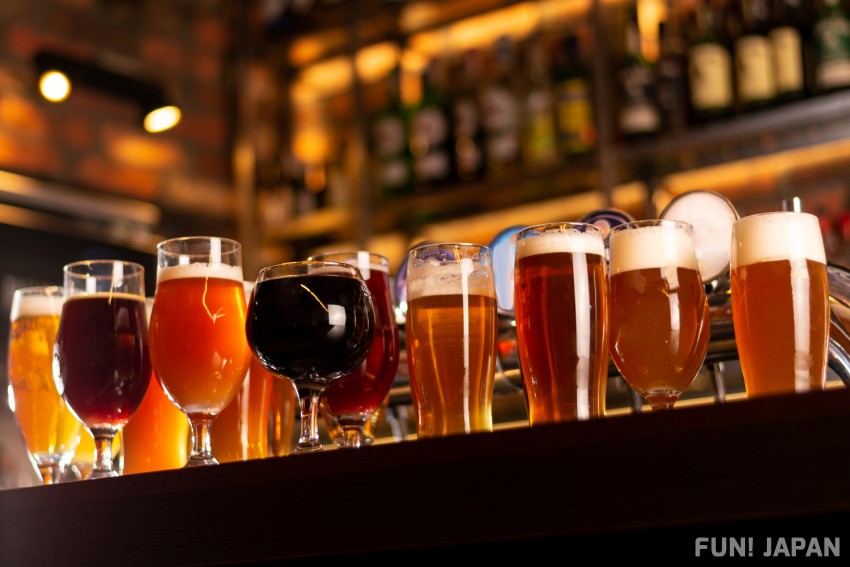
When we say "champon", in the context of a drinking party, it doesn't refer to a delicious noodle dish, but to the act of drinking various types of alcohol in one sitting. For example, the first drink might be beer, the second a lemon sour, the third sake, the fourth whiskey...etc. Drinking different types of alcohol can prevent you from getting bored, but because the alcohol content and sizes of the drinks vary, it's easy to drink more than your limit, which can lead to heavy intoxication.
- Example of use:
- A-san: "Dくん、ちゃんぽんで飲みすぎ!ちゃんとお水飲みなよ!" / "D-kun, champon de nomisugi! chanto omizu nomi na yo!" (D, you're drinking too much with champon style! Make sure you drink some water!)
- D-san: "ちゃんと水飲むからもっと色々飲ませてよ。俺、あと10杯は飲まないと帰らないからね!" / "chanto mizu nomu kara motto iroiro nomasete yo. ore, ato juppai wa nomanai to kaeranai kara ne!" (I'll drink water, but let me try more drinks. I won't go home until I've had at least 10 more drinks!)
Senbero (せんベロ)
This term is an abbreviation of the Japanese phrase "a place where you can get drunk for a thousand yen" (千円でベロベロになるまで飲める店 / sen en de berobero ni naru made nomeru mise), and refers to enjoying alcohol cheaply. It often refers to inexpensive pubs and standing bars, with popular Senbero spots gathered in areas such as Ueno, Okachimachi, Asakusa, Akabane, Ikebukuro, and Shinjuku. Also, even at regular pubs, there are places that offer a Senbero menu, which includes a few snacks and one drink.
- Example of use:
- Waiter E: "ご注文いかがですか?" / "go chuumon ikaga desu ka?" (What would you like to order?)
- B-kun: "せんベロセットに、もつ煮込みとおでんください!" / "senbero setto ni, motsu nikomi to oden kudasai" (I'll have the Senbero set, with simmered offal and oden, please!)
Nomihou (飲み放題 / Nomihoudai - All-you-can-drink)
All-you-can-drink (Nomihoudai, abbreviated as "nomihou") is a popular system in Japanese restaurants where, for a fixed fee, you can enjoy as many drinks as you like from a specified menu within a time limit. There are cases where there is an all-you-can-drink plan from the start, and cases where you can add all-you-can-drink for an additional fee when ordering food. It is very convenient for end-of-year parties and group drinking parties, and the appeal is that you can enjoy it for a long time without worrying about the cost.
- Example of use:
- B-kun: "僕はソフトドリンクだけで十分だけど、Dくん飲み放題つける?" / "Boku wa sofuto dorinku dake de juubun da kedo, D-kun nomihoudai tsukeru?" (I'm fine with just soft drinks, but D, are you going for all-you-can-drink?)
- D-kun: "え!Bくん全然飲まんの?じゃあ、俺だけ飲みほうつけようかな" / "e! B-kun zenzen noman no? jaa, ore dake nomihou tsukeyou kana" (What! B, you're not drinking at all? Well then, I guess I'll go for all-you-can-drink just for me)
Oru-nomi (オール飲み)
In Japan, people often use the term "pulling an all-nighter" (somehow it is abbreviated as 'all' as in オールする / Oru suru) to describe staying up all night drinking or having fun until the first train in the early morning or late-night hours. During the year-end party season, you'll often see Japanese people eating and drinking until the closing time of restaurants or the last train, then moving to entertainment facilities like karaoke that are open until around 5 am, or to bars that are open late at night, and enjoying themselves with colleagues or friends until the first train.
- Example of use:
- D-kun: "うわ~!話し込んだら終電逃しちゃったな。Bくんどうする?" / "uwa~! hanashi kondara shuuden nogashichatta na. B-kun dou suru?" (Wow! We missed the last train because we were so engrossed in our conversation. What are you going to do, B?)
- B-kun: "僕はここから20分ぐらい歩いたら、家帰れるから今日は帰ろうかな?" / "boku wa koko kara nijuppun gurai aruitara, ie kaereru kara kyou wa kaerou kana?" (I can get home in about 20 minutes by walking from here, so I think I'll go home today.)
- D-kun: "え、家近いの!じゃあ、Bくん家で、オールで家飲みしよう♪" / "e, ie chikai no! jaa, B-kun uchi de, o-ru de ie nomimashou♪" (Oh, you live close by! Then, let's have a house party at B's place and pull an all-nighter♪)
- B-kun: "え……いいよ" / "e...... ii yo" (Uh... okay.)
Common practices among Japanese people during the year-end party season
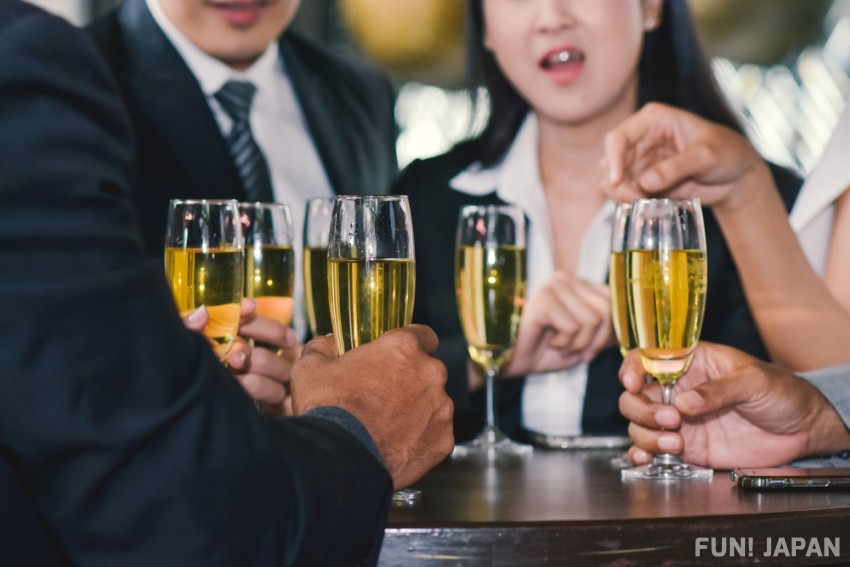
Nomini-cation (飲みにケーション)
Nomini-cation is a portmanteau of the Japanese phrase for "going out to drink" (飲みに行く / nomi ni iku) and "communication". In Japan, there is a belief that drinking alcohol with company superiors and colleagues can facilitate smoother work-related communication. As part of Nomini-cation, some companies make it mandatory to attend year-end parties and employee farewell/welcome parties.
Enkai-gei & Enkai-game (宴会芸 & 宴会ゲーム)
Currently, due to the COVID pandemic, it may have been abolished, but at large drinking parties such as corporate and school year-end parties, banquet performances (Enkai-gei) and banquet games (Enkai-game) are often used as exciting elements. Banquet performances are performances such as singing, dancing, impersonations, and comedy that are performed to entertain the participants. In banquet games, prizes and prize money are competed for in bingo, quizzes, and rock-paper-scissors.
Sakenoshime (酒の締め - Closing of the drinking party)
In Japan, at the end of drinking parties and year-end parties, a "*handclap" (手締め / teshime or 手打ち / teuchi) involving all participants, such as a single handclap or a triple handclaps, is performed.

Also, it is common to eat ramen or similar dishes as a "finishing menu for alcohol" (酒の締め / sakenoshime) after drinking parties. Recently, there has been an increase in people, especially among the younger generation who do not drink alcohol to eating sweets such as night parfaits and night ice cream as finisher. The "finisher menu" for alcohol has become an important element to wrap up a fun time.
※A traditional Japanese custom of clapping hands in rhythm with a shout to celebrate the end of events such as weddings, funerals, and other ceremonies
This is a Japanese New Year's custom! Sake terms to remember for New Year's
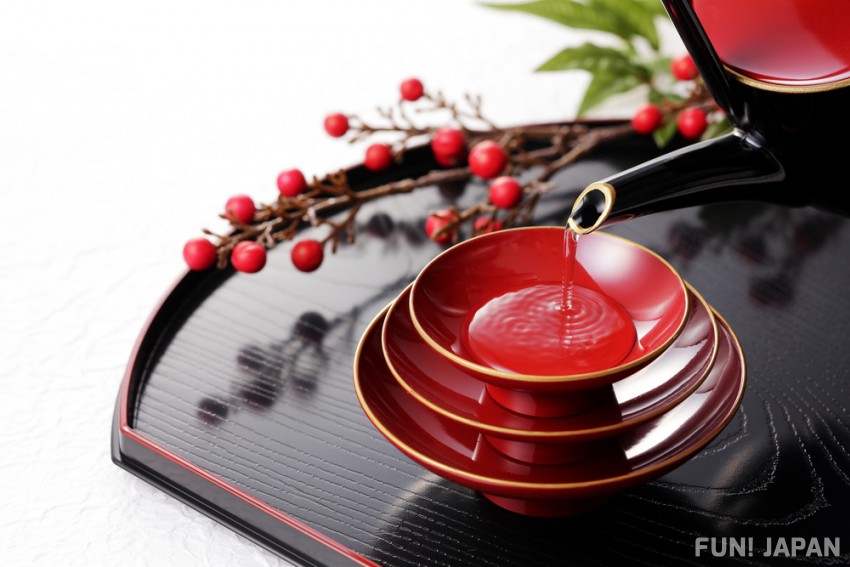
As mentioned in "Spending the New Year in Japan - Toshikoshi & Hatsumode", it is customary in Japan to drink celebratory sake during New Year's Eve and New Year's Day. Here, we introduce some sake-related terms you might want to know for the New Year's season.
Otoso (お屠蘇)
This is a celebratory sake drunk on New Year's Day to ward off evil spirits and wish for longevity. Traditionally, it was a herbal sake made by soaking medicinal herbs in sake and mirin, and it was served in a red-lacquered sake pot called a "tosoki" (屠蘇器) and a three-tiered cup. However, many households now drink sake in regular sake vessels. Also, if there are not enough sake vessels, it is acceptable to drink one cup at a time in three separate servings using a single sake vessel.
Omiki (お神酒)
This is sake offered to the gods, and is one of the offerings (神饌 / shinsen) made at shrines or household altars. It is believed that the omiki offered to the gods is imbued with spiritual power, and at the first shrine visit of the New Year, some shrines serve omiki to worshippers wishing for a year free of illness and disaster.
Taruzake (たる酒)
This refers to sake that has been stored in cedar barrels for a certain period of time and has a cedar aroma. At New Year's and celebratory occasions, it is served to participants as a lucky drink during the Kagami-biraki ceremony.
Kagami-biraki (鏡開き)

Kagami-biraki is one of the special ceremonies for the start of the New Year's work and events, and it is a ritual to open a sake barrel by breaking the lid with a wooden mallet. The "kagami" (鏡 - 'mirror') in "Kagami-biraki" signifies harmony, and "hiraku" (開く - 'opening') signifies a good luck spread. Opening the "mirror" is said to open "fortune".
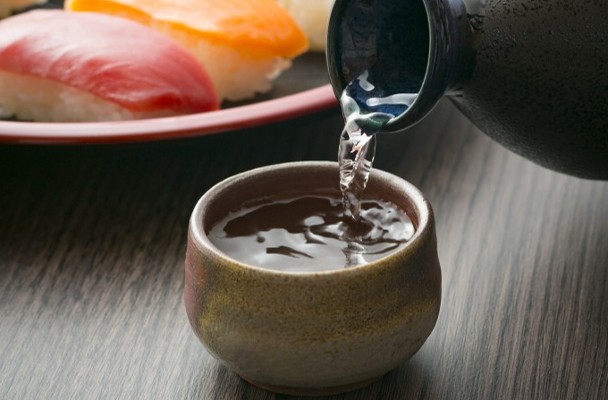
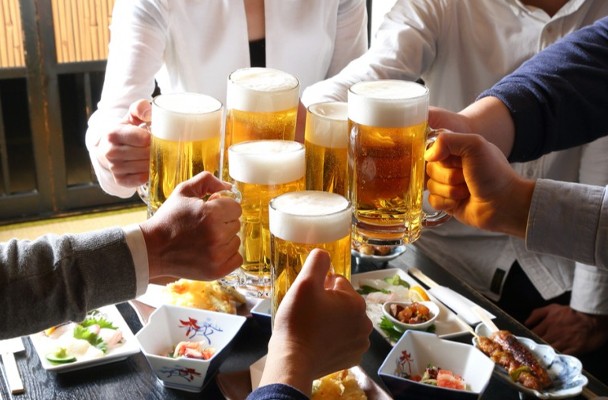
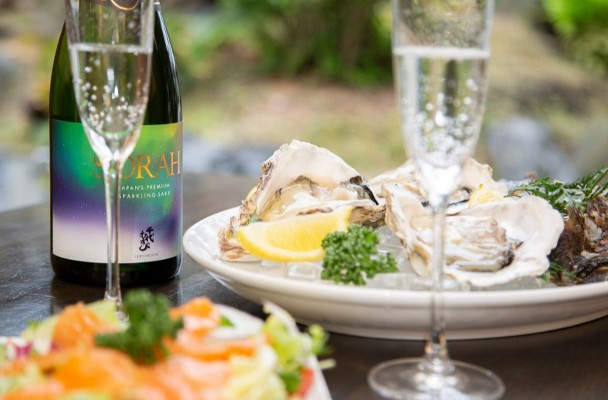
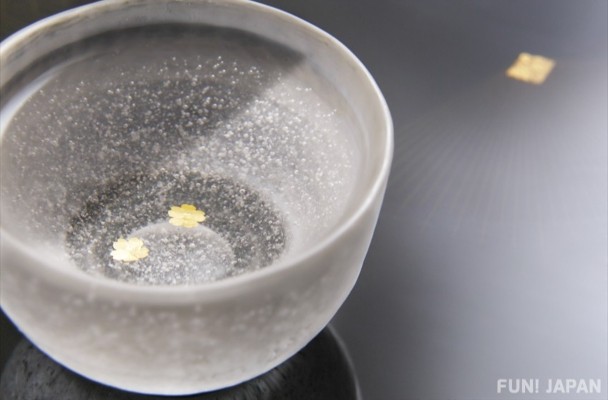
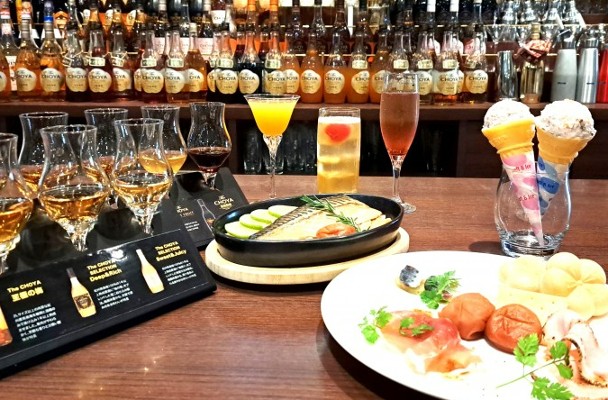
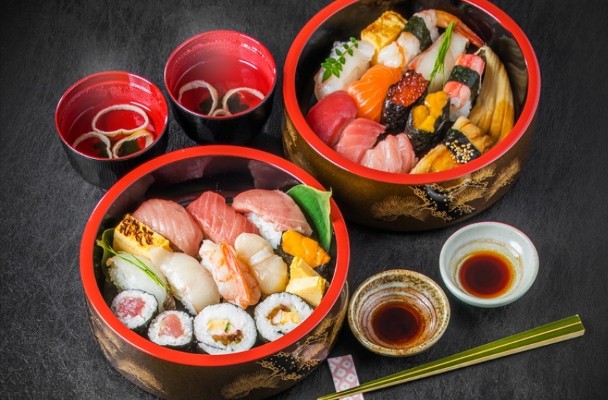

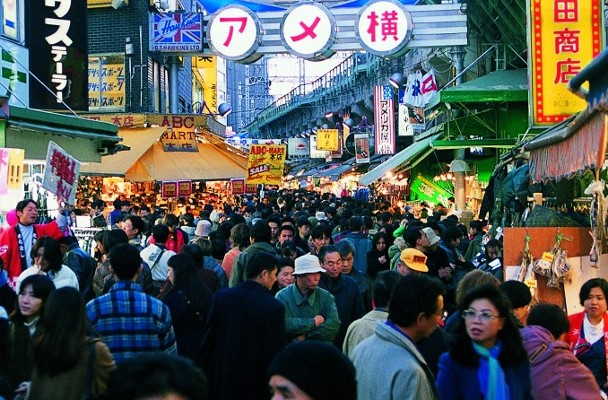
Comments